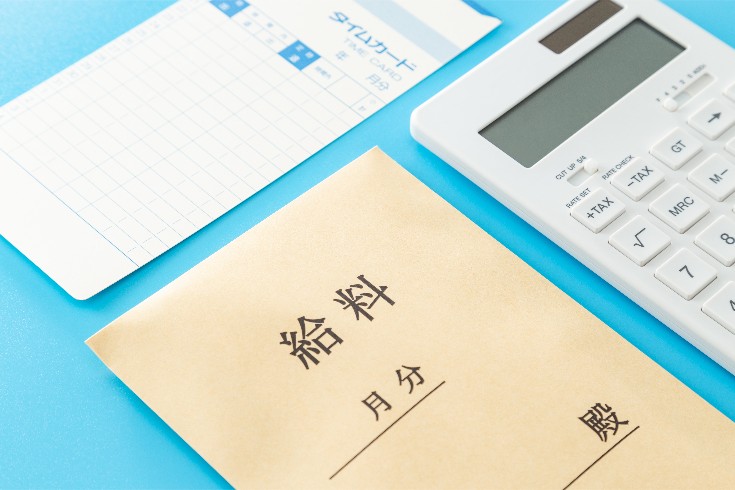Key Points to Consider in Contract Documents for App M&A

In recent years, there has been an increase in the sale and acquisition of apps through M&A. When it comes to app M&A, the acquisition of Instagram by Facebook is a well-known story, but this trend is also true for venture companies.
In the past, many aimed for an exit (recovery of investment) through an IPO (Initial Public Offering), but in recent years, there has been an increase in cases where app M&A is conducted to exit earlier than an IPO or to raise funds for new business challenges.
However, as app M&A is not something that is done frequently, there may be many things you don’t know about what to pay attention to when creating a contract. Therefore, in this article, we will explain in detail the points to be careful about in the contract for app M&A.
What is App M&A?
Applications that are downloaded from app stores like Apple and Google and used on smartphones are called ‘native apps’. Those that operate on a web browser without the need for download are called ‘web apps’. However, when we generally refer to ‘apps’, we are referring to ‘native apps’.
The term ‘M&A (Mergers and Acquisitions)’ is used because in the case of transferring software alone, various procedures are required to operate it, such as the copyright of third parties used in development, and for server-linked apps, the succession or transfer of applications related to the server. Therefore, it is rational to acquire at the company level or business unit level.
Four Methods of Conducting App M&A

① Complete Share Transfer
A complete share transfer is a method of M&A where all shareholders of the target company transfer their shares, thereby transferring management rights to the buyer. This method is suitable for ventures where the owner or a few executives hold the majority of the shares.
The advantage of a complete share transfer is that only the shareholders change, so there is no need for rights succession or negotiations with third parties or users.
To implement this, a “Share Transfer Agreement” must be concluded between all shareholders of the target company and the buyer.
② Merger
A merger is a type of “merger” where one company becomes one with another, and one company disappears, with all its rights and obligations being inherited by the surviving company.
To implement this, a “Merger Agreement” must be concluded between the disappearing company and the surviving company.
③ Share Exchange
A share exchange is a method of M&A where the “acquiring company” acquires shares from the “acquired company’s shareholders” in exchange for its own shares. The acquired company becomes a 100% subsidiary.
To implement this, a “Share Exchange Agreement” must be concluded between the acquiring company and the acquired company.
④ Business Transfer
A business transfer is a method of M&A where part or all of the target company’s business is carved out and sold to the buyer. This method is suitable for companies that operate multiple businesses.
The difference from a share transfer is that the necessary assets for the business can be selectively bought and sold. To implement this, a “Business Transfer Agreement” must be concluded between the target company and the buyer.
Among the four methods of conducting app M&A, we will explain in detail in the next section the key points of the contract for share transfer and business transfer, which are frequently chosen in the acquisition of apps by IT venture companies.
Key Points in Share Transfer Agreements
Checks Before Drafting
In order to avoid failure in share transfers, it is necessary to check the following two points before drafting a share transfer agreement.
Is the Target Company a ‘Share Certificate Issuing Company’?
Under the Companies Act enacted on May 1, 2006 (Heisei 18), it is a principle that a corporation does not issue share certificates, and only companies that have stipulated in their articles of incorporation that they will issue shares can issue share certificates. Such companies are called ‘Share Certificate Issuing Companies’.
In the case of a share certificate issuing company, under the provisions of the Companies Act, the transfer of shares does not take effect unless the seller delivers the share certificates to the buyer, so it is important to check the articles of incorporation of the transfer company in advance.
Are There Any Transfer Restrictions on the Shares of the Target Company?
Transfer-restricted shares are shares for which the articles of incorporation stipulate that the company’s approval is required for the transfer of shares. In order to transfer them, the approval of the target company (general meeting of shareholders, board of directors, etc.) is required in addition to the consent of the seller, so it is essential to check the articles of incorporation.
Points to Note in the Share Transfer Agreement
Although a share transfer agreement is a contract between two parties, the shareholder (seller) who holds the shares of the target company and the buyer, the target company that issues and manages the shares is also involved.
Approval of Transfer
If there are no transfer restrictions on the shares of the target company, there is no problem, but if there are transfer restrictions, the approval of the target company must be obtained for the transfer.
Point to note:
If there are transfer restrictions, it should be stipulated in the share transfer agreement that the target company must obtain transfer approval by a certain deadline.
Change of Name in the Shareholder Register

In the case of a general company that does not issue share certificates, even if the share transfer is completed between the target company and the buyer, the buyer cannot assert his/her status as a shareholder and exercise voting rights at the general meeting of shareholders unless the name change in the shareholder register is made.
Point to note:
To make a name change, the ‘seller’ and ‘buyer’ listed in the shareholder register as shareholders must jointly request a name change, so it should be stipulated in the share transfer agreement that when the share transfer is completed, the seller and buyer will jointly request a name change promptly.
However, in the case of a share certificate issuing company, the buyer can request a name change alone, so this clause is not necessary.
Representations and Warranties
Representations and warranties are where the seller represents and warrants to the buyer about the business content, financial content, shares, etc. of the target company. This is a necessary clause to protect the buyer in case the seller’s explanation differs from the actual situation, and is particularly important in share transfer agreements.
Point to note:
While a wide range of representations and warranties is reassuring for the buyer, for the seller, it is less risky to distinguish between items that can be represented and warranted and those that are difficult, and to limit them to possible items.
Key Points to Consider in Business Transfer Agreements
Pre-confirmation
When a business transfer takes place, the operating company changes, and therefore, the contractual relationships with the business partners involved in the target business are not inherited. Therefore, it is necessary to confirm in advance whether the buyer will also enter into similar contracts with the business partners.
Also, in some cases, it may be necessary to re-contract with users who are using the app. Therefore, it is important to check the contents of the current contract and to handle it carefully, such as issuing a press release, before the buyer starts the service.
Key Points to Consider in Business Transfer Agreements
While the procedure for a stock transfer, which involves buying and selling the entire company, is simple, a business transfer requires various procedures, such as specifying the assets, claims, and debts to be transferred, and switching contracts with business partners.
Inventory of Transferred Assets
The most important thing in a business transfer agreement is to specify the transferred assets. Normally, an “Asset Inventory” is created and attached to the contract. The contents of the inventory include not only real estate, equipment, and personnel, but also intellectual property rights such as trademarks and copyrights.
Point to note:
Since “Author’s Moral Rights” cannot be transferred, they remain with the target company even after the business transfer. Therefore, it is necessary to stipulate the non-exercise of the author’s moral rights in the business transfer agreement.
Inventory of Claims
If there are uncollected claims in the transferred business and the buyer inherits them, a separate “Claim Inventory” is created and attached to the contract.
Point to note:
If the contract between the target company and the debtor prohibits the transfer of claims, it is necessary to amend the contract.
Inventory of Debts
If the buyer inherits the debt, a “Debt Inventory” is created and attached to the contract, similar to the claims.
Point to note:
To avoid risks such as the discovery of new debts after the business transfer, it is necessary to have the target company declare in the business transfer agreement that the debts related to the transferred business are all those listed in the “Debt Inventory”.
Exemption Registration
Article 22 of the Japanese Company Law stipulates that “if the buyer continues to use the ‘trade name’ of the target company, the buyer is also responsible for repaying the debts incurred by the target business”.
In this case, the buyer is not responsible for the debts of the target company when the buyer has made an “exemption registration”, or when the buyer and the target company have jointly notified a third party that the buyer is not responsible for the debts of the target company.
Point to note:
In order for the buyer to make an exemption registration, the cooperation of the target company is necessary, so it should be stipulated in the business transfer agreement that the target company will cooperate in the exemption registration.
Representation and Warranty
(Same as in the stock transfer agreement)
Non-competition Obligation
The non-competition obligation is related to the “prohibition of competition” stipulated in Article 21 of the Japanese Company Law. The target company is not allowed to engage in the same business in the same city or town and its adjacent areas for 20 years (or 30 years by special agreement) from the date of the business transfer.
Point to note:
In the case of a business that involves the Internet, such as an app, the scope of Article 21 of the Japanese Company Law may be insufficient. Therefore, it may be considered to specify the area of the non-competition obligation as “worldwide” in the business transfer agreement. Also, it is possible to stipulate a period exceeding 20 years.
Summary: Methods of Mobile or Web App M&A and some of the Key Points in Contract Documents
We have thoroughly explained the four methods of App M&A, the related contracts, and the key points to note in the frequently used ‘Share Transfer Agreement’ and ‘Business Transfer Agreement’.
Exit is a major theme for venture companies, but depending on the content of the contract, it can also carry significant risks.
To successfully carry out an App M&A, which has various methods, we recommend consulting with a law firm that has specialized legal knowledge and extensive experience and receiving their advice.
Category: General Corporate
Tag: General CorporateM&A





















